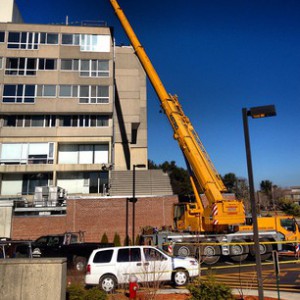 Cranes are massive machines moving extremely heavy things in the air, and the last thing a crane operator wants is an accident to occur. Imagine being the crane operator who “accidentally” smashes a steel beam through an office building’s windows—you don’t want to be that guy or gal.
Cranes are massive machines moving extremely heavy things in the air, and the last thing a crane operator wants is an accident to occur. Imagine being the crane operator who “accidentally” smashes a steel beam through an office building’s windows—you don’t want to be that guy or gal.
Today’s cranes are typically equipped with computers, and tempting though it may be, you shouldn’t override the computer and “go rogue.” This isn’t a video game or a movie.
Also, cell phones can be a huge distraction when working inside the cab. You’re trying to concentrate and all of the sudden you hear a loud ringtone—not cool. It’s best to turn the phone off whenever you’re operating the crane. You’ve got a job to do and shouldn’t be checking Facebook updates or chatting with friends.
Just like a pilot walks around their plane before taking off and heading into the air, a crane operator should visually inspect their crane before putting it into operation. Obviously, the ground around the crane needs to be stable in such a way that it can support the crane and suspended loads. Walking around the crane to check for mechanical, electrical, structural and hydraulic issues is always a good idea before starting work, as is checking oil, gas and fluid levels—better safe than sorry.
Read and know the load charts before putting a crane to work, and use the appropriate pads and cribbing so you don’t have an outrigger fail or sink when lifting an object in the air.
Crane operators have to be fully aware of everything going on around them and the crane, including weather conditions and nearby hazards. Be on the lookout for power lines, people and anything else “in the way” in order to avoid accidents and/or injuries.

